Art and architecture hold a unique position as tangible elements of culture, pieces of living history carrying the creative DNA of their time. They share a synergistic relationship; it’s the stained glass in Saint Chapelle that makes the building ethereal, and the embrasure of the Rothko Chapel that releases the power of the paintings. As a firm, we’ve had the opportunity to explore this powerful relationship through our work, finding ways to shape space to work in concert with the art it houses:
- Architecture can “announce” the art through its entry sequence, preparing the visitor for their experience of the art within the experience of the building.
- It acts as a foil and a complement to the art by providing the appropriate volume, color palette and degree of openness or intimacy. It controls natural and artificial light within a space to best display the art. It creates opportunities for edited, grouped collections which, when gathered together, are stronger than when dispersed across disparate spaces.
- It can frame art through placement – on axis, as a surprise, in context with nature or through custom display components.
- Lastly, the architecture can, in rare circumstances, riff on the art itself through material selection or through the embedding of commissioned art.
In making living spaces which do double duty as gallery space, we are inextricably linking the perception of the space and the art. In these projects, the pieces displayed are part of highly personal collections which provide enjoyment for the people who live with them. We have the opportunity to make spaces which heighten that enjoyment by creating context, choreography, and moments of surprise and delight.
 In the Robbs Run house, designed for an artist/curator and her husband, a floating partition opposite the front door functions as both a welcoming art wall defining the foyer and a privacy screen for the staircase. Commissioned pieces – a starlit chandelier in the dining room and a colorful glass backsplash in the kitchen – were also embedded in the house.
In the Robbs Run house, designed for an artist/curator and her husband, a floating partition opposite the front door functions as both a welcoming art wall defining the foyer and a privacy screen for the staircase. Commissioned pieces – a starlit chandelier in the dining room and a colorful glass backsplash in the kitchen – were also embedded in the house.
 A collection of School of Paris paintings is made more striking by the quiet context of the Ridge Oak Residence. The vibrance of the art is enhanced by the neutral colors of the space, the balanced natural light, and the intuitive circulation patterns. The prominent displays include the hallways, sized and aligned to be galleries, and even the kitchen, providing many focal points and viewing perspectives.
A collection of School of Paris paintings is made more striking by the quiet context of the Ridge Oak Residence. The vibrance of the art is enhanced by the neutral colors of the space, the balanced natural light, and the intuitive circulation patterns. The prominent displays include the hallways, sized and aligned to be galleries, and even the kitchen, providing many focal points and viewing perspectives.
 The Shavano Park house was designed for a glass art collector; we saw the building itself as an opportunity to play with the wonderful characteristics of glass, imparting translucence, transparency, and layered space and color. The whole house speaks to the owner’s love of glass as a medium, starting with the commissioned glass front door handle, which is the “handshake” of the house. Inside, custom cabinetry defines galleries and rooms while framing the glass art in open or back-walled vignettes. Art is aligned to be seen on axis as well as across a courtyard, through several layers of glass walls.
The Shavano Park house was designed for a glass art collector; we saw the building itself as an opportunity to play with the wonderful characteristics of glass, imparting translucence, transparency, and layered space and color. The whole house speaks to the owner’s love of glass as a medium, starting with the commissioned glass front door handle, which is the “handshake” of the house. Inside, custom cabinetry defines galleries and rooms while framing the glass art in open or back-walled vignettes. Art is aligned to be seen on axis as well as across a courtyard, through several layers of glass walls.
 At the University of Texas at Austin, the Christian-Green Gallery shows how subtle interventions into a structure can allow a collection to surprise. A glass enclosure makes the space on the second floor of Jester Center approachable and accessible, inviting visitors to discover the artistic culture of Africa and its Diaspora. The entry portal, welcome desk, and other elements were created from African hardwoods as a nod to the cultural mission of the gallery. Backlit fabric scrims provide variable illumination and create the stunning effect of ceilings which disappear. By changing the perceived volume of the space, the lighting gives a sense of drama to a broader range of art. As a whole, the space is deferential, adapting to the art rather than competing with it.
At the University of Texas at Austin, the Christian-Green Gallery shows how subtle interventions into a structure can allow a collection to surprise. A glass enclosure makes the space on the second floor of Jester Center approachable and accessible, inviting visitors to discover the artistic culture of Africa and its Diaspora. The entry portal, welcome desk, and other elements were created from African hardwoods as a nod to the cultural mission of the gallery. Backlit fabric scrims provide variable illumination and create the stunning effect of ceilings which disappear. By changing the perceived volume of the space, the lighting gives a sense of drama to a broader range of art. As a whole, the space is deferential, adapting to the art rather than competing with it.
In our corporate work, we had the unique opportunity to repurpose a defunct mid-century Austin bank building into corporate offices for the brand development agency McGarrah Jessee. Original to the building’s formal lobby was a Seymour Fogel mural, once the centerpiece of the main banking floor. Following a painstaking restoration to reverse years of exposure to cigarette smoke, we sought to further link the space to the experience of the art.

The building’s original escalators – the first in Austin – were refurbished, imbuing the arrival sequence with its old magic as the mural once again drifts into view. At the far end of the lobby, a site-specific mobile hangs as an artistic counterpoint created to balance the space. Walls around the mezzanine level were removed, opening the upper floor to views of the art from new vantage points. Finishes are largely subdued, but a few colors were lifted from the mural and applied sparingly throughout the building, strengthening the connection between the architecture and the art while keeping the focus squarely on the painting.
Collectively, these moves position the mural as the most memorable and compelling part of the space. The building fosters a relationship between its occupants and its art, and years after moving in, members of the McGarrah Jessee team continue to see the piece anew.
Through our own experience as practicing architects, we have seen how thoughtful architecture can enhance the daily experience of art.

If you or your organization would like more information on this topic, please email us.

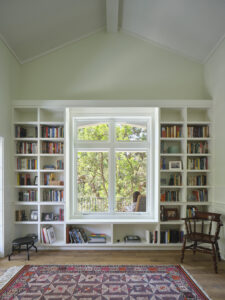
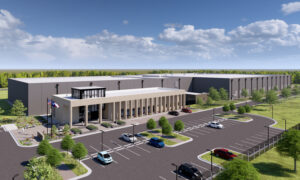
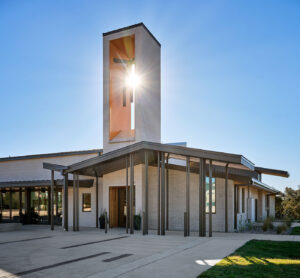

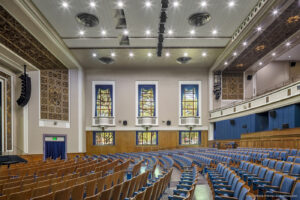
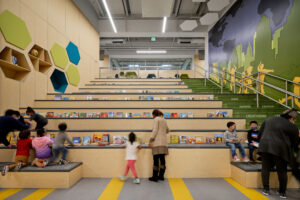
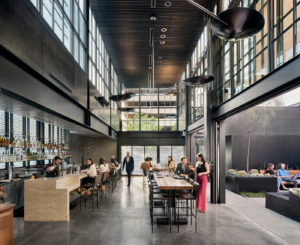
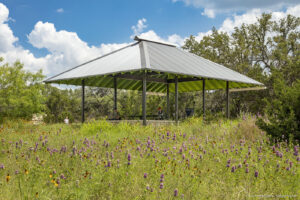
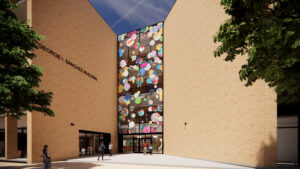
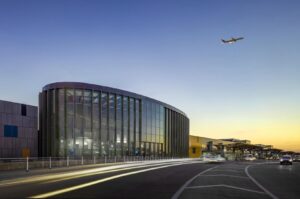

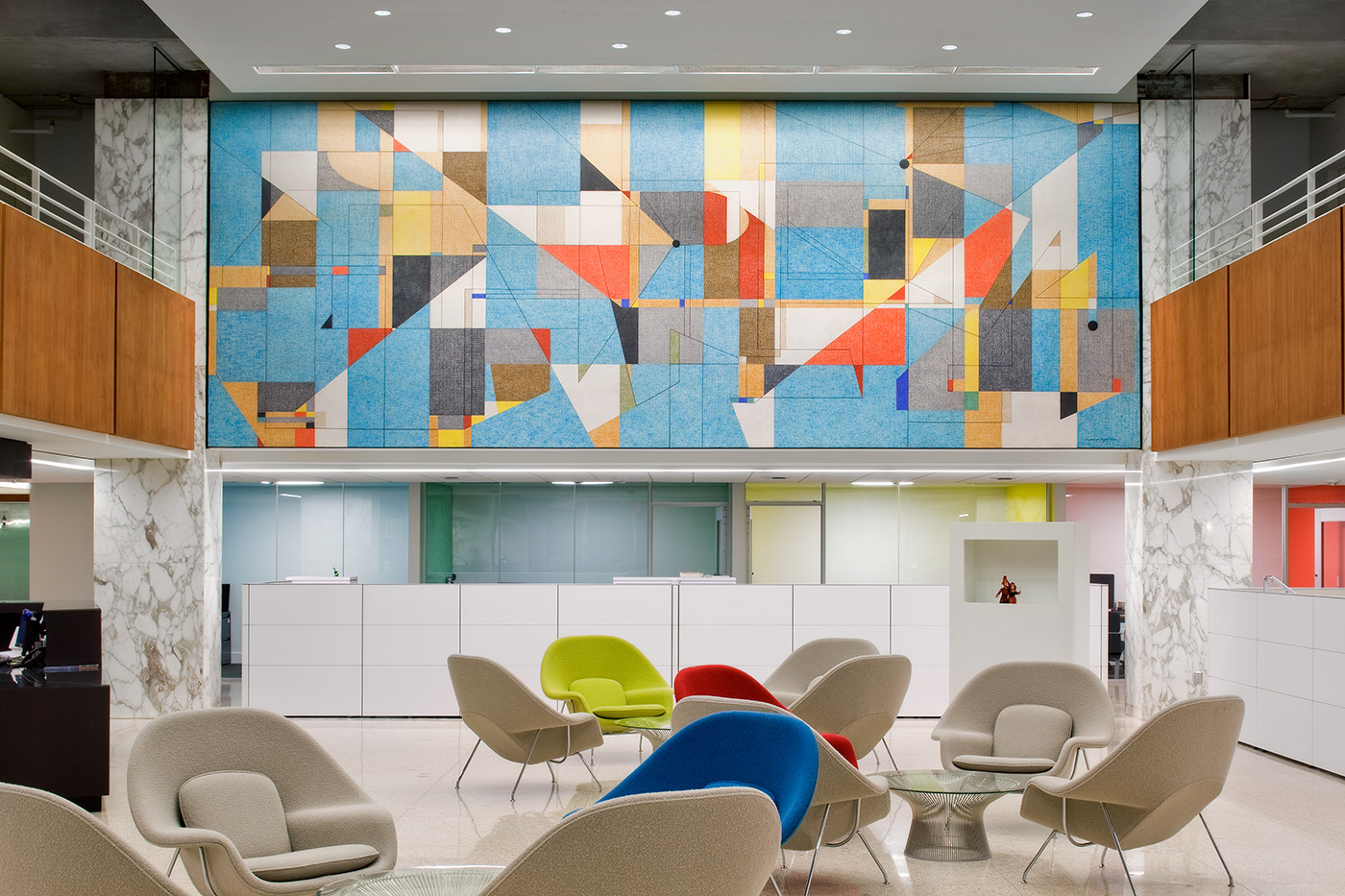
 In the Robbs Run house, designed for an artist/curator and her husband, a floating partition opposite the front door functions as both a welcoming art wall defining the foyer and a privacy screen for the staircase. Commissioned pieces – a starlit chandelier in the dining room and a colorful glass backsplash in the kitchen – were also embedded in the house.
In the Robbs Run house, designed for an artist/curator and her husband, a floating partition opposite the front door functions as both a welcoming art wall defining the foyer and a privacy screen for the staircase. Commissioned pieces – a starlit chandelier in the dining room and a colorful glass backsplash in the kitchen – were also embedded in the house. A collection of School of Paris paintings is made more striking by the quiet context of the Ridge Oak Residence. The vibrance of the art is enhanced by the neutral colors of the space, the balanced natural light, and the intuitive circulation patterns. The prominent displays include the hallways, sized and aligned to be galleries, and even the kitchen, providing many focal points and viewing perspectives.
A collection of School of Paris paintings is made more striking by the quiet context of the Ridge Oak Residence. The vibrance of the art is enhanced by the neutral colors of the space, the balanced natural light, and the intuitive circulation patterns. The prominent displays include the hallways, sized and aligned to be galleries, and even the kitchen, providing many focal points and viewing perspectives. The Shavano Park house was designed for a glass art collector; we saw the building itself as an opportunity to play with the wonderful characteristics of glass, imparting translucence, transparency, and layered space and color. The whole house speaks to the owner’s love of glass as a medium, starting with the commissioned glass front door handle, which is the “handshake” of the house. Inside, custom cabinetry defines galleries and rooms while framing the glass art in open or back-walled vignettes. Art is aligned to be seen on axis as well as across a courtyard, through several layers of glass walls.
The Shavano Park house was designed for a glass art collector; we saw the building itself as an opportunity to play with the wonderful characteristics of glass, imparting translucence, transparency, and layered space and color. The whole house speaks to the owner’s love of glass as a medium, starting with the commissioned glass front door handle, which is the “handshake” of the house. Inside, custom cabinetry defines galleries and rooms while framing the glass art in open or back-walled vignettes. Art is aligned to be seen on axis as well as across a courtyard, through several layers of glass walls. At the University of Texas at Austin, the Christian-Green Gallery shows how subtle interventions into a structure can allow a collection to surprise. A glass enclosure makes the space on the second floor of Jester Center approachable and accessible, inviting visitors to discover the artistic culture of Africa and its Diaspora. The entry portal, welcome desk, and other elements were created from African hardwoods as a nod to the cultural mission of the gallery. Backlit fabric scrims provide variable illumination and create the stunning effect of ceilings which disappear. By changing the perceived volume of the space, the lighting gives a sense of drama to a broader range of art. As a whole, the space is deferential, adapting to the art rather than competing with it.
At the University of Texas at Austin, the Christian-Green Gallery shows how subtle interventions into a structure can allow a collection to surprise. A glass enclosure makes the space on the second floor of Jester Center approachable and accessible, inviting visitors to discover the artistic culture of Africa and its Diaspora. The entry portal, welcome desk, and other elements were created from African hardwoods as a nod to the cultural mission of the gallery. Backlit fabric scrims provide variable illumination and create the stunning effect of ceilings which disappear. By changing the perceived volume of the space, the lighting gives a sense of drama to a broader range of art. As a whole, the space is deferential, adapting to the art rather than competing with it.
